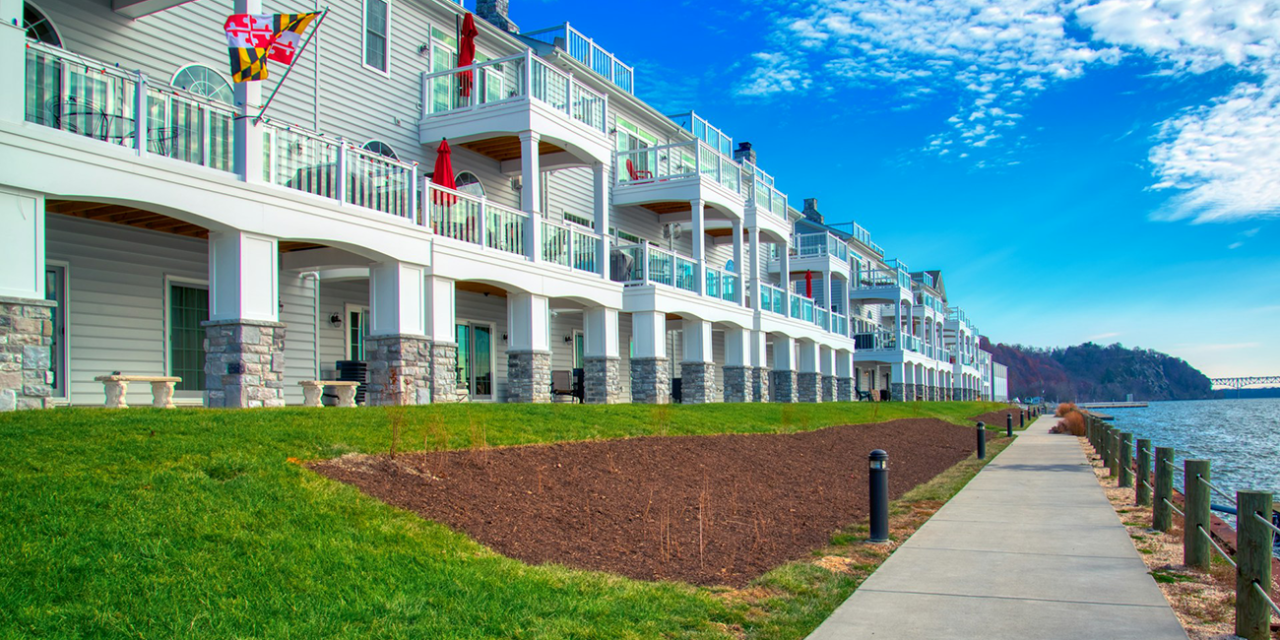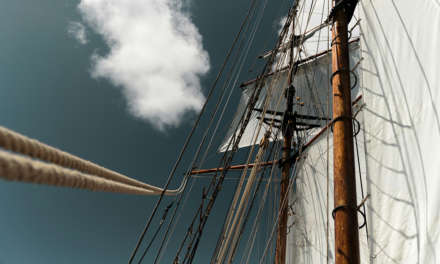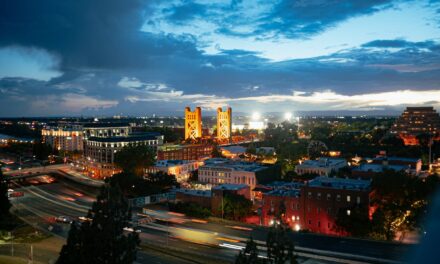Maryland has a rich and varied history dates back to the early 17th century.
From its indigenous roots and colonial foundations to its role in the American Revolution and its subsequent growth, Maryland has played a significant role in the history of the United States.
Below, we explore Maryland’s fascinating history, covering its foundation, key historical events, and notable landmarks.
Table of Contents
Early History
Indigenous Inhabitants and European Exploration
Before European settlers arrived, Maryland was home to various Native American tribes, including the Algonquian, Iroquoian, and Siouan-speaking peoples.
- These tribes had established societies with rich cultures, agriculture, and trade networks.
- Giovanni da Verrazzano, an Italian explorer, was among the first Europeans to explore the area in the early 16th century, followed by John Smith in the early 17th century.
The indigenous peoples and early European explorers laid the groundwork for future settlements.
Colonial Period
Maryland’s colonial history began in 1632 when King Charles I of England granted a beginning charter to Cecilius Calvert, the second Lord Baltimore.
- The first settlers arrived in 1634, establishing the settlement of St. Mary’s City.
- Maryland was intended as a haven for English Catholics facing persecution in Anglican England.
The colony’s early economy was based on tobacco farming, which relied heavily on indentured servants and later enslaved Africans.
Religious Toleration and Growth
The Maryland Toleration Act of 1649 became one of the very first laws explicitly allowing religious freedom for all Christians.
- This act was significant in promoting religious diversity and tolerance within the colony.
- The colony grew steadily, becoming more structured and economically diverse.
By the late 17th century, Maryland was a thriving colony with a growing population and economy.
18th Century and the American Revolution
Pre-Revolutionary Period
Maryland played a crucial role in the lead-up to the American Revolution.
- The colony was known for producing goods like wheat and iron, essential for the war effort.
- Maryland’s strategic location made it a key area for troop movements and supplies.
The state became a hotbed of revolutionary activity, with leaders like Samuel Chase and Charles Carroll of Carrollton playing significant roles.
Revolutionary War
During the American Revolution, Maryland contributed significantly to the Patriot cause.
- The state provided soldiers, supplies, and financial support.
- The Battle of Baltimore in 1814 inspired Francis Scott Key to write “The Star-Spangled Banner,” which later became the national anthem.
Maryland’s support was instrumental in the eventual success of the American Revolution.
19th Century Development
Industrial Growth and the Civil War
The 19th century saw significant industrial growth in Maryland, transforming it into a major economic powerhouse.
- Baltimore became a leading port and industrial center known for shipbuilding and manufacturing.
- The state was divided during the Civil War, with both Union and Confederate sympathizers.
The Mason-Dixon Line, surveyed in the 1760s, became symbolic as the dividing line between the North and the South.
Post-War Growth and Social Changes
Following the Civil War, Maryland continued to grow and modernize.
- The expansion of the railroad network and the rise of the steel industry, notably the Bethlehem Steel Corporation in Sparrows Point, fueled economic development.
- Social changes included the gradual improvement of civil rights for African Americans and the growth of educational institutions.
Institutions like Johns Hopkins University and Hospital, founded in the late 19th century, became centers of education and medical research.
20th Century and Modern Era
Economic Shifts and Cultural Developments
The 20th century brought economic changes and cultural developments to Maryland.
- The decline of traditional manufacturing industries led to economic diversification into sectors like biotechnology, information technology, and defense.
- Maryland became known for its research institutions and proximity to federal government agencies in Washington, D.C.
Modern Maryland is known for its historical landmarks, educational institutions, and contributions to science and technology.
Environmental and Historical Preservation
Efforts to preserve Maryland’s rich history and natural beauty have been ongoing.
- The state has numerous parks, historical sites, and cultural institutions, such as the Chesapeake Bay and Antietam National Battlefield.
- Preservation organizations work to protect Maryland’s historic buildings and landscapes.
These preservation efforts ensure that Maryland’s history remains accessible and appreciated by future generations.
Notable Landmarks
The Chesapeake Bay
The Chesapeake Bay is the very largest estuary located in the United States and a vital natural resource for Maryland.
- It supports a rich ecosystem and is crucial for the state’s fishing and seafood industries.
- Efforts to protect and restore the bay have been ongoing, addressing issues like pollution and habitat loss.
The Chesapeake Bay symbolizes Maryland’s natural heritage and environmental stewardship.
Fort McHenry National Monument and Historic Shrine
Fort McHenry is best known for its role in the War of 1814 when its defense inspired the lyrical Francis Scott Key to write “The Star-Spangled Banner.”
- The fort has been preserved as a national monument and historic shrine.
- It offers educational programs and reenactments, providing insights into Maryland’s military history.
Fort McHenry is a significant symbol of American resilience and patriotism.
The United States Naval Academy
The United States Naval Academy started and was founded in 1845 in Annapolis is one of the most prestigious military academies in the world.
- It trains officers for service in the U.S. Navy and Marine Corps.
- The academy’s campus, known as “The Yard,” includes historic buildings, monuments, and museums.
The Naval Academy is a vital institution for training military leaders and a landmark of Maryland’s commitment to national defense.
The Maryland State House
The Maryland State House is the oldest state capitol in continuous legislative use in Annapolis.
- It was completed in 1772 and served as the temporary U.S. Capitol from 1783 to 1784.
- The building is a National Historic Landmark and features exhibits on Maryland’s political history.
The State House is a symbol of Maryland’s enduring political heritage.
Governance
State Government
Maryland operates under a constitution that was adopted in 1867.
- The state government consists of the Executive, Legislative, and Judicial branches.
- The governor, currently Wes Moore, serves as the head of the executive branch.
The state government works to address the needs of its diverse population and manage its resources effectively.
Local Government
Maryland’s local government structure includes counties, municipalities, and special districts.
- Each level of government has specific responsibilities for services such as education, public safety, and infrastructure.
- Local governance ensures that the diverse needs of Maryland’s communities are met.
Effective local governance contributes to the overall well-being of the state’s residents.
Demographics and Growth
Population
Maryland has a diverse and growing population.
- As of the 2022 census, the population was 6.165 million.
- The state’s demographic makeup reflects its rich history of immigration and cultural diversity.
Diverse demographics and steady growth reflect Maryland’s appeal as a place to live and work.
Education and Economy
Maryland is home to some of the nation’s top educational institutions, including Johns Hopkins University and the University of Maryland.
- The state’s economy has diversified into biotechnology, cybersecurity, and aerospace sectors.
- Maryland continues to be a leader in higher education and research.
These factors contribute to the state’s economic resilience and cultural vibrancy.
State of Maryland Q&A
Q: When was Maryland founded?
A: Maryland started and was founded in 1632 when King Charles I of England granted charter to Cecilius Calvert, the second Lord Baltimore. The first settlers arrived in 1634, establishing the settlement of St. Mary’s City.
Q: Who were the original inhabitants of Maryland?
A: The original inhabitants of Maryland were various Native American tribes, including the Algonquian, Iroquoian, and Siouan-speaking peoples. These tribes had established societies with rich cultures, agriculture, and trade networks before the arrival of European settlers.
Q: What role did Maryland play in the American Revolution?
A: Maryland played a crucial role in the American Revolution by providing soldiers, supplies, and financial support. The state’s strategic location made it a key area for troop movements and supplies, and leaders like Samuel Chase and Charles Carroll of Carrollton were instrumental in the revolutionary cause.
Q: How did Maryland’s economy evolve in the 19th century?
A: Maryland experienced significant industrial growth in the 19th century, transforming it into a major economic powerhouse. Baltimore became a leading port and industrial center known for shipbuilding and manufacturing.
Q: What significant changes occurred in Maryland post-World War II?
A: Post-World War II, Maryland saw economic shifts with the decline of traditional manufacturing industries, leading to diversification into sectors such as biotechnology, information technology, and defense. The state also became known for its research institutions and proximity to federal government agencies in Washington, D.C.
Q: What are some notable historical landmarks in Maryland?
A: Notable landmarks include the Chesapeake Bay, Fort McHenry National Monument, and Historic Shrine, the well-known United States Naval Academy, and the Maryland State House. These sites highlight the state’s historical and cultural significance.
Q: How is Maryland governed?
A: Maryland operates under a constitution adopted in 1867. It has an Executive, Legislative, and Judicial branch. The governor is the head of the executive branch, and counties, municipalities, and special districts manage local governance.
Q: What is the current population of Maryland?
A: Maryland’s population was 6.165 million as of the 2022 census. The state’s population continues to grow, reflecting its diverse culture, educational opportunities, and economic resilience.
Q: What is the main economic activity in Maryland?
A: Maryland’s economy is highly diversified, encompassing several key sectors.
- Biotechnology and Life Sciences: Maryland is home to many biotech firms and research institutions, particularly in the I-270 corridor, also known as “DNA Alley.”
- Defense and Aerospace: The state hosts numerous military bases and defense contractors, benefiting from its proximity to Washington, D.C.
- Information Technology and Cybersecurity: Maryland is a leader in IT and cybersecurity with major federal agencies and private firms.
- Education and Healthcare: Prominent institutions like Johns Hopkins University and the University of Maryland contribute significantly to the state’s economy through education and medical research.
Q: What are Maryland’s contributions to education and research?
A: Maryland is a leader in education and research, home to several top-tier institutions.
- Johns Hopkins University: Located in Baltimore, it is renowned for its research programs, particularly in medicine and public health.
- University of Maryland: With campuses across the state, it provides comprehensive educational programs and is involved in extensive research initiatives.
- Federal Research Institutions: Maryland hosts several federal research facilities across the state, including the National Institutes of Health (NIH) and the National Institute of Standards and Technology (NIST).
Q: How does Maryland preserve its historical sites?
A: Maryland has a robust commitment to preserving its historical sites and heritage.
- Maryland Historical Trust: This organization works to identify, protect, and enhance Maryland’s historic places.
- Historic Districts and Landmarks: Numerous historic districts and landmarks, such as the Antietam National Battlefield and the Historic St. Mary’s City, are preserved and open to the public.
- State and Local Initiatives: Both state and local governments have enacted preservation laws and offer grants and tax incentives to maintain and restore historical sites.
Q: What role does Maryland play in American culture and arts?
A: Maryland has a vibrant cultural scene with significant contributions to the arts and humanities.
- Baltimore Museum of Art & the Walters Art Museum: These institutions house extensive collections of art from around the world.
- Maryland State Arts Council: This council supports arts programming across the state, including theater, music, and visual arts.
- Festivals and Events: Maryland hosts numerous cultural festivals, such as the Maryland Film Festival, Artscape in Baltimore, and various music festivals.
Q: What are some unique attractions in Maryland?
A: Maryland offers a variety of unique attractions that cater to diverse interests.
- Annapolis: The state capital, known for its historic architecture and as the home of the United States Naval Academy.
- Deep Creek Lake: A popular destination for outdoor activities, including boating, fishing, and skiing.
- Assateague Island: Famous for its wild horses and beautiful beaches, it is popular for camping and nature watching.
Q: What environmental initiatives are present in Maryland?
A: Maryland has implemented several environmental initiatives to preserve its natural resources and promote sustainability.
- Chesapeake Bay Restoration: Efforts to clean and restore the Chesapeake Bay are among the most significant environmental initiatives in the state.
- Renewable Energy Programs: Maryland promotes the use of renewable energy sources across the state, including solar and wind power, to reduce reliance on fossil fuels.
- Conservation Programs: Various state programs aim to protect forests, wetlands, and wildlife habitats, ensuring long-term environmental health.
Q: How does Maryland address healthcare needs?
A: Maryland has a robust healthcare system that provides comprehensive services to its residents.
- Top Hospitals: The state is home to renowned hospitals like Johns Hopkins Hospital and the University of Maryland Medical Center.
- Healthcare Reforms: Maryland has implemented innovative healthcare reforms, including the unique all-payer rate-setting system, to control hospital costs and improve care quality.
- Public Health Initiatives: The state focuses on preventive care, chronic disease management among the population, and mental health services to make sure residents are well cared for.
Q: What are Maryland’s major transportation networks?
A: Maryland has a well-developed transportation network that supports its economy and connects it to the broader Northeast region.
- Major Highways: Interstate 95, Interstate 70, and the Baltimore-Washington Parkway are critical routes for road travel.
- Rail Services: Amtrak and the MARC Train Service connect to major cities, including Washington, D.C., and Philadelphia.
- Airports: Baltimore/Washington International Thurgood Marshall Airport (BWI) is the state’s primary airport, offering domestic and international flights.
Maryland’s rich history and continuous development make it a vibrant and thriving state.
By preserving its historical landmarks and investing in future growth, Maryland continues to honor its past while looking forward to continued growth and development.





